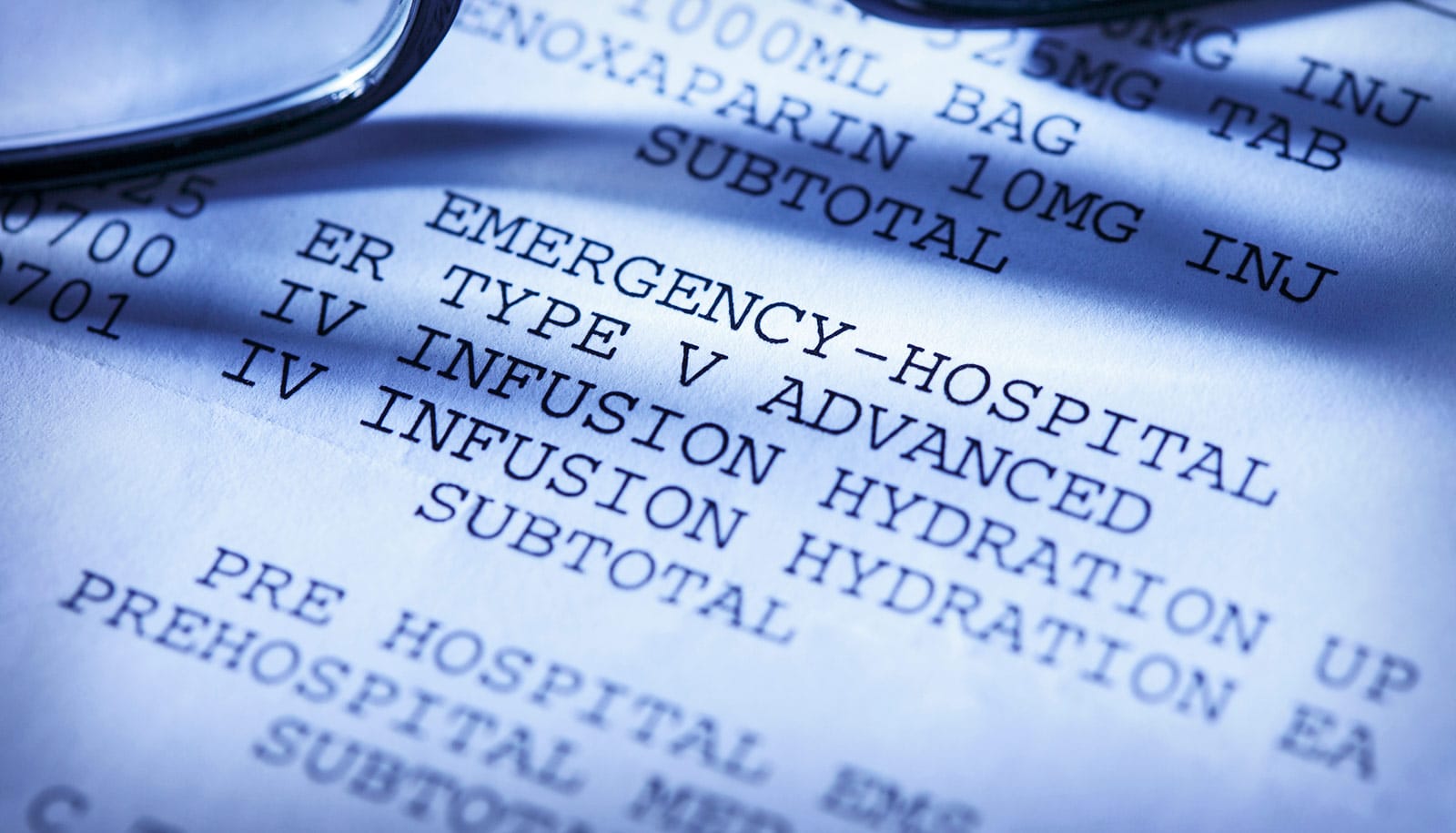People with unpaid health care bills are less likely to seek needed medical care, evidence indicates.
Earlier this summer, Stanford economist Neale Mahoney sounded an alarm with a study he coauthored: Americans have at least $140 billion in unpaid health care bills sitting in collection agencies—making the country’s medical debt crisis far bigger than anyone had realized.
Based on an analysis of a financial assistance program for low-income patients at Kaiser Permanente hospitals in Northern California, Mahoney and his fellow researchers saw an immediate and sharp increase in visits to the doctor among program enrollees once their Kaiser debts were forgiven.
And this, in turn, contributed to an increase in abnormal test results for heart disease and diabetes, both serious conditions. The researchers also detected a large uptick in prescription refills for high cholesterol, diabetes, and depression.
“It seems that the financial burden of medical debt discourages people from accessing important health care,” says Mahoney, an economics professor in the Stanford University School of Humanities and Sciences and also a fellow at the Stanford Institute for Economic Policy Research (SIEPR).
“This research,” he adds, “tells us that, if you relieve some of the financial burden from low-income people with medical debt, you see really large increases in health care use and care that is of high value. All of this is really important for improving health outcomes.”
The findings, detailed in a working paper that the non-profit research organization National Bureau for Economic Research (NBER) has published, comes amid a larger policy debate in the United States around free or discounted care for patients who can’t afford to pay.
Hospital financial assistance programs are widespread and help to ensure equity in access to care in the United States. Imagine someone gets in a car accident or develops appendicitis and immediately incurs a hefty health care tab, Mahoney says. By offering some form of temporary financial assistance, such hospital programs are meant to ensure that patients who can’t afford to pay get the ongoing treatment they need to recover.
But such programs have also long been criticized for not doing enough to help low-income patients. A lot of the heat has been directed at nonprofit hospitals, which are required under federal and state law to offer financial assistance as a condition of their non-exempt status. In some cases, these hospitals have been accused of aggressively inhibiting patients from getting aid.
Medical debt and ‘charity care’
According to the new study, US hospitals—about 70% of which are nonprofits—contributed $26 billion in what is known as “charity care” in 2018. For the average hospital, such payouts represent about 1-1.5% of annual expenses.
While many studies have looked at charity care’s impact on hospital finances, until now, the effects on patient care were “completely unknown,” Mahoney says. One reason is that medical data are usually incomplete because doctors and hospitals typically operate independently, which makes it impossible to track patient care across providers and over time.
Kaiser’s model of care, however, makes for an ideal experiment, Mahoney says. Because the health care giant operates a closed network of hospitals, doctors, and pharmacies, members receive almost all care from a single organization. Kaiser maintains an extensive digital paper trail on patient care and also offers a form of financial support that is common among hospitals: a combination of debt forgiveness and a temporary freeze on rules requiring patients to share costs for their care.
Another advantage is that Kaiser has strict eligibility rules based on income that allowed Mahoney and his collaborators to compare patients who barely made the cutoff and were given financial assistance with those who earned slightly more than allowed and were denied support.
“This means we can compare people who just barely qualify and those who just barely don’t,” Mahoney says. “We can zoom in on people on either side of the income threshold, generating a natural experiment.”
Getting care and filling prescriptions
The researchers analyze demographic data on some 18,680 applicants to Kaiser Permanente Northern California’s financial assistance program from early 2016 through late 2017. They tracked visits to doctors and emergency rooms, hospital stays, prescription drug use, laboratory tests, and results for two years before and two years after Kaiser accepted or rejected an application. The researchers looked, too, at applicants’ health costs in the year before their request was decided.
They found that financial assistance applicants on average had slightly more than $6,000 in health costs in the months prior to Kaiser ruling on their eligibility, which is much higher than the average person. Those who entered the program saw their entire debt forgiven and their co-payments eliminated for six months if they were on Medicare and 12 months if they were not.
Patients, according to the study, quickly sought medical care after receiving financial help. They went to the doctor or hospital more often and were more likely to fill prescriptions—including for cholesterol, diabetes, and depression.
Mahoney and his coauthors calculate that any applicant for charity care had a 67% likelihood of visiting a Kaiser provider at any given time during the period studied. For patients accepted into the Kaiser program, those odds rose 13.4 percentage points in the first three months of enrollment. Also, the chances that they would go to the emergency room increased 6.7 percentage points; for hospital stays, it grew 3.6 percentage points. These patients were also more likely to get a lab test early on, which led to a 4 percentage point increase in abnormal results for heart disease and diabetes.
The researchers say their findings are consistent with a groundbreaking 2008 Oregon experiment that showed similar increases in health care use by patients who were uninsured and then gained coverage under the state’s Medicaid program for low-income residents.
Are hospitals doing enough?
The new study also finds that increases in medical visits by patients who received Kaiser support disappeared within nine months—indicating that the program, designed to offer short-term relief for up to a year, works as intended, Mahoney says.
Even so, Mahoney cautions that the study looks at the potential of a single financial assistance program. A lot more needs to be done, he says, to address charity care’s many shortcomings, chief among them efforts by some hospitals to deter low-income patients from seeking support.
“We’re not saying that anyone who is low-income and gets a bill from the hospital qualifies for charity care,” Mahoney says. “But I am skeptical that every patient who could, or should, be applying is actually applying.”
Additional coauthors of the study are from the Stanford School of Medicine; SIEPR; Harvard Business School; NBER; and UCLA’s Anderson School of Management.
Source: Krysten Crawford for Stanford University



